Why Don’t Bats Get Cancer? How bat research could transform human aging and cancer treatment…
Bats are the longest-lived mammals for their size, with species like the little brown bat (Myotis lucifugus) surviving over 30 years in the wild. Even
In response to the Mongabay article of August 29 titled, “Bats and viruses: Beating back a bad reputation,” Dr. Sheema Abdul Aziz commented as follows on September 5:
“Actually this article neglected to mention another huge problem caused by these negative representations of bats. It’s not just about deliberate human killings of bats – even where bats are not being killed by people, the repercussions of this negative reputation are still damaging in indirect ways because it affects efforts and funding for research and conservation. I am currently the only person working on the conservation ecology of Pteropus in Malaysia, where there has been such a disproportionate amount of attention, effort, and money put into researching ONLY the virology and public health aspects of these bats. Hardly anyone is interested in looking at the conservation ecology aspect; never mind that these bats are important pollinators and seed dispersers, and are severely threatened by hunting – all topics which desperately require more attention and work. I can’t tell you how frustrating it is to be constantly approached by other researchers who are only interested in collaborating on virology, or to be told that I can only get funding if I include a disease and public health aspect in my project. Ultimately these bats will go extinct if people – including researchers and funders – are simply too focused on worrying about whether we’re going to catch diseases from them, instead of trying to mitigate the threats that we humans present to them. This kind of attitude is very, very damaging to bat conservation.”
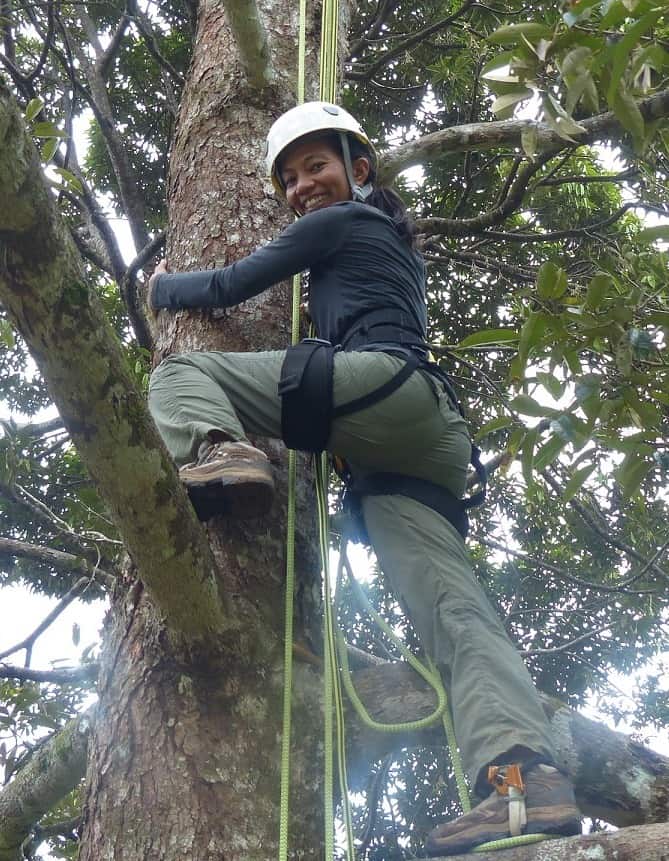
Dr. Aziz is one of a very few researchers in her part of the world dedicated to helping people understand the economic and ecological importance of conserving flying foxes. Her research titled, “Pollination by the locally endangered island flying fox (Pteropus hypomelanus) enhances fruit production of the economically important durian (Durio zibethinus),” recently appeared in the journal Ecology and Evolution.
In her paper, she provides information critical to convincing islanders to protect flying foxes, namely that they are playing a key role as pollinators of one of Southeast Asia’s most valued crops, not causing damage as previously believed. She used camera and video traps to document that island flying foxes (Pteropus hyomelanus) do not damage durian flowers, as even some researchers had suspected. Video traps clearly absolved the bats. Island flying foxes and cave nectar bats (Eonycteris spelaea) are major pollinators. The damage was caused by plantain squirrels (Callosciurus notatus) who often ate immature flowers.
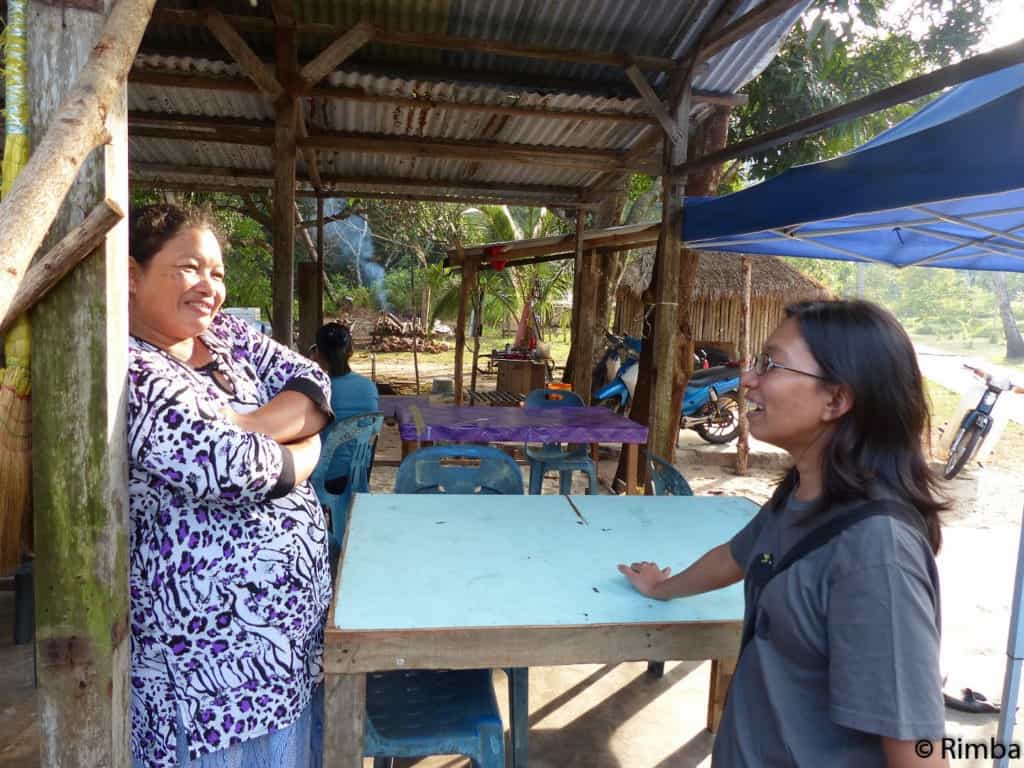
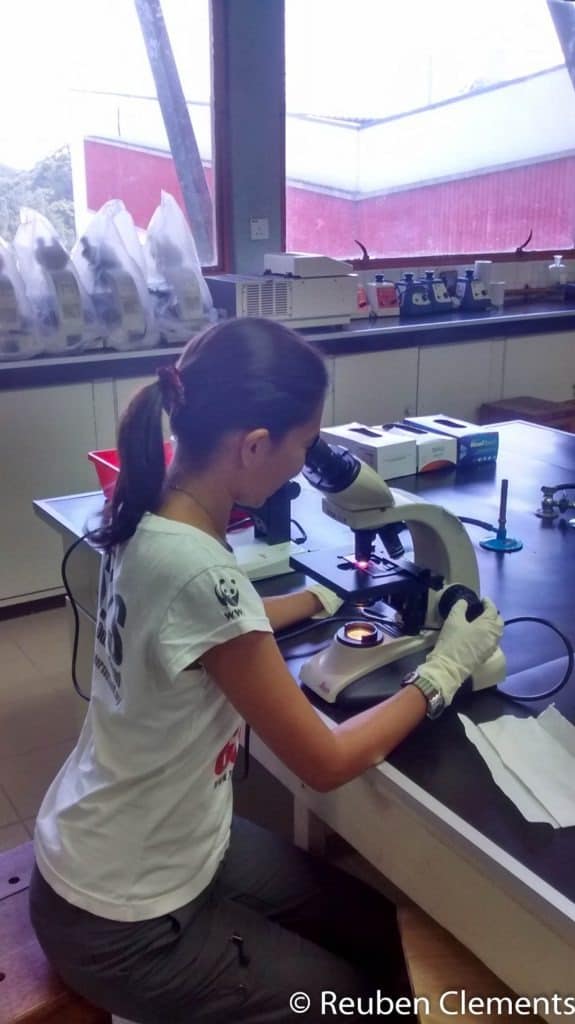
Aziz also notes that flying foxes sometimes can become a nuisance when roosting too near people, causing both noise and odor problems. She hopes to find a way to harmlessly convince these bats to move farther away, so they will be more welcome. There is an urgent need for education to minimize negative biases while solving legitimate nuisances. Aziz emphasizes the need to find solutions to real problems instead of needlessly scaring people about rare threats.
She reports, “I have been using your [Merlin Tuttle’s] photos, especially the amazing shots of P. vampyrus, in all the presentations I give. It’s enormously helpful because the only shots I have of that species are the poor dead ones shot by a hunter, and it’s not a very nice picture at all. I think it would be almost impossible for me to get a good photo of P. vampyrus here in Malaysia! Your close-up shots of Pteropus pollinating and feeding on fruit are also particularly useful for illustrating bat ecosystem services – I used these in a public talk I gave, at an event organized by the Malaysian Heritage and History Club, which was very well received. And of course, I also used your photos in the awareness video! I now use them anytime I want to talk about bat ecosystem services.”
Aziz is devoting her career to helping people solve problems while benefiting from the essential contributions of flying foxes. If bats are to survive in sufficient numbers to fulfil their critical environmental and ecological roles, Aziz, and many more like her will need all the help they can get. Just saving a few endangered remnants is not enough!
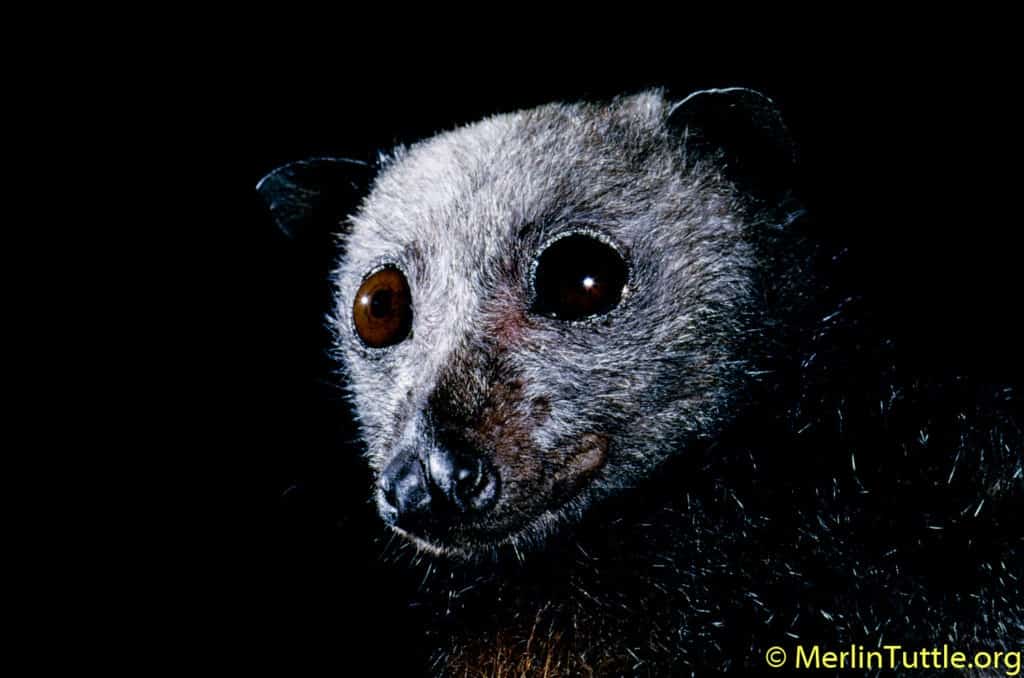
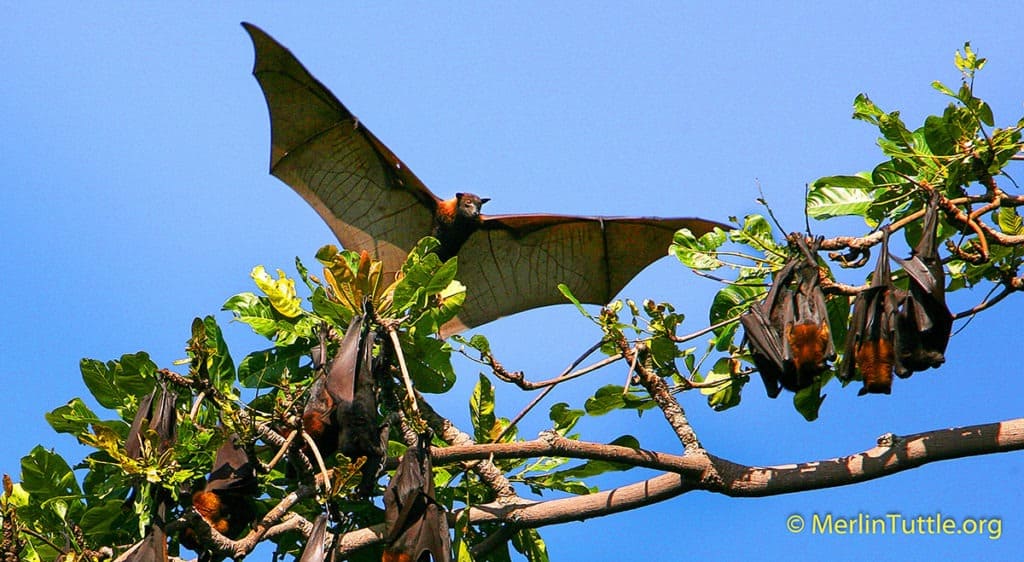
Love our content? Support us by sharing it!
Bats are the longest-lived mammals for their size, with species like the little brown bat (Myotis lucifugus) surviving over 30 years in the wild. Even
Can we afford to lose bats? A recent study by Eyal Frank of the University of Chicago reveals that the dramatic decline in U.S. bat
Bats are among the most fascinating yet misunderstood creatures in the natural world, and for many conservationists, a single experience can ignite a lifelong passion
Many bat conservationists know that Kasanka National Park in Zambia is an exceptional place for bats, but it is also the place that sparked my
2024 © Merlin Tuttle’s Bat Conservation. All rights reserved.
Daniel Hargreaves is a lifelong bat conservationist who has worked globally to facilitate progress, including co-founding Trinibats, a non-profit bat conservation organization in Trinidad. He has organized and led field workshops worldwide, including five for MTBC. Following a long and successful career in business, he now manages a network of bat reserves for the Vincent Wildlife Trust in the UK, supervising research and development of new and innovative conservation techniques. Daniel also is one of the world’s premier bat photographers.
Madelline Mathis has a degree in environmental studies from Rollins College and a passion for wildlife conservation. She is an outstanding nature photographer who has worked extensively with Merlin and other MTBC staff studying and photographing bats in Mozambique, Cuba, Costa Rica, and Texas. Following college graduation, she was employed as an environmental specialist for the Florida Department of Environmental Protection. She subsequently founded the Florida chapter of the International DarkSky Association and currently serves on the board of DarkSky Texas. She also serves on the board of Houston Wilderness and was appointed to the Austin Water Resource Community Planning Task Force.
Michael Lazari Karapetian has over twenty years of investment management experience. He has a degree in business management, is a certified NBA agent, and gained early experience as a money manager for the Bank of America where he established model portfolios for high-net-worth clients. In 2003 he founded Lazari Capital Management, Inc. and Lazari Asset Management, Inc. He is President and CIO of both and manages over a half a billion in assets. In his personal time he champions philanthropic causes. He serves on the board of Moravian College and has a strong affinity for wildlife, both funding and volunteering on behalf of endangered species.